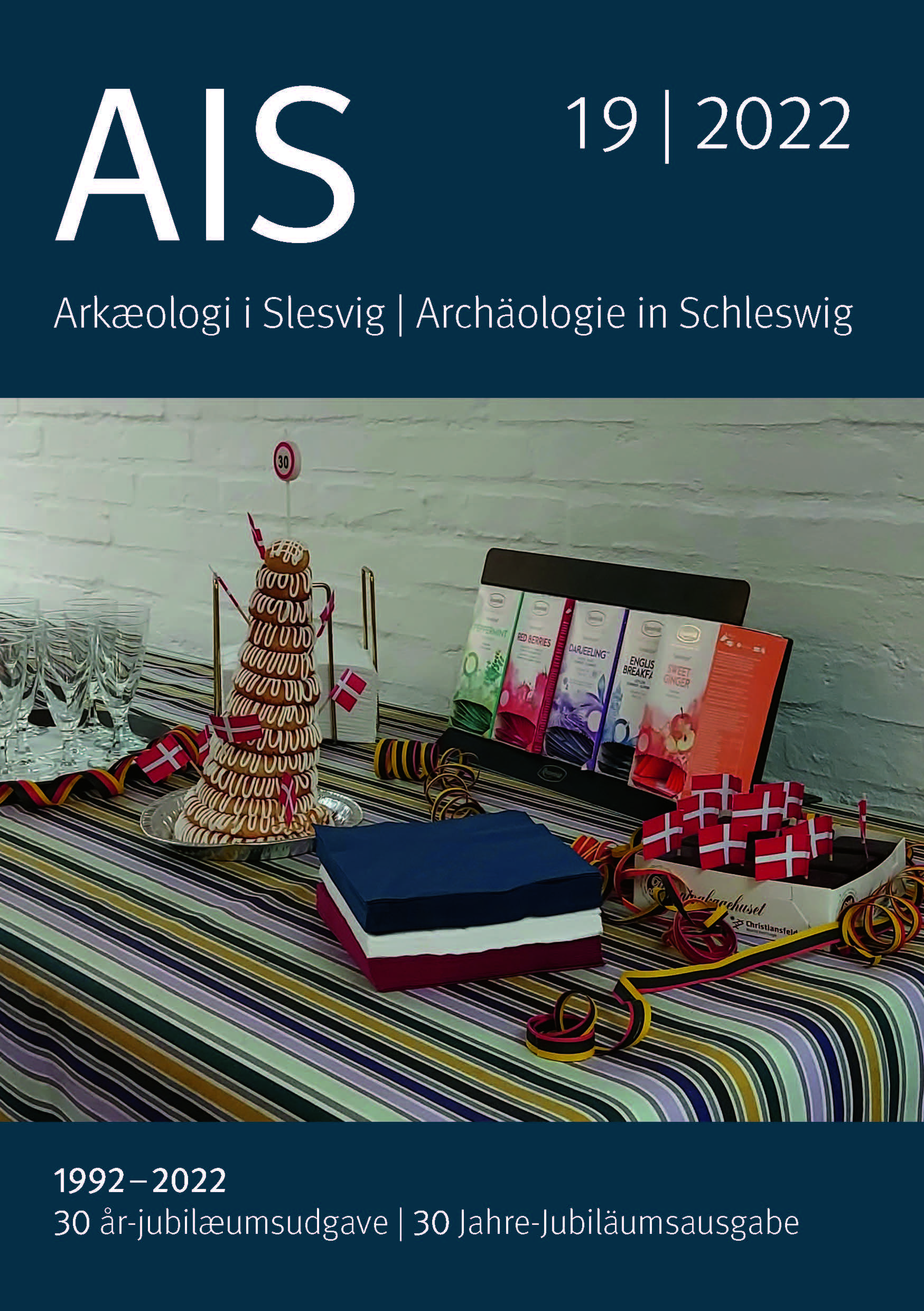Fæstedskatten – oprindelsen
Abstract
The Viking Age gold hoard from Fæsted
was discovered by amateur archaeologists
and excavated by Sønderskov
Museum in 2016 and has since grown
by several additional artefacts. The hoard
has been studied in several articles,
some with more scholarly value than
others. Three articles should be highlighted,
which shed light on the hoard in
different ways; an initial in-depth presentation
of the find (Grundvad/Poulsen
2020), a typological analysis of the
Jelling style‘s relationship to Gorm the
Old and the Jelling dynasty‘s use of the
Nordic styles, where the hoard and the
artifacts are used as a case (Grundvad/
Knudsen 2017) and then an attempt to
interpret the hoard as a religious deposition
(Grundvad 2022; Grundvad in
press).
This article is the fourth in a planned
series of analyses, each of which aims to
illuminate the Fæsted hoard from different
perspectives. Thus, the goal here
is to ascertain the origin of the jewellry
and artifacts from the treasure. It is clear
though, that this is far from feasible to
do with all objects. For some artifacts,
unambiguous relationships are clear
to see. For some of the other objects, a
slightly bold interpretation of origin will
be presented, where both distinctions
are made to the Roman imperial jewellery
seen in the iconographic sources
and to the loot which the Vikings are
known to have brought home from raids.
Finally, the aim is to present what
the different origins reveal and how the
hoard of gold artifacts seems intentionally
put together.
Downloads
Veröffentlicht
Zitationsvorschlag
Ausgabe
Rubrik
Lizenz
Copyright (c) 2023 Tidsskrift og forfatter

Dieses Werk steht unter der Lizenz Creative Commons Namensnennung - Nicht-kommerziell - Weitergabe unter gleichen Bedingungen 4.0 International.
Die Zeitschrift ist nicht dafür verantwortlich, Erlaubnisse von Dritten einzuholen, beispielsweise um Abbildungen bei evtl. Publikation des Materials.etc. zu benutzen.
Der Autor ist allein verantwortlich für alle Rechte bezüglich Kartenmaterial, Fotos, Zeichnungen und andere graphische Elemente.
Das copyright für die Artikel liegt bei den Autoren und der Zeitschrift.
Autoren, die Ihre werken in dieser Zeitschrift publizieren, akzeptieren folgende Bedingungen:
Open Access: Der Autor behält die Ursprungsrechte und erlaubt der Zeitschrift die Erstpublizierung.





